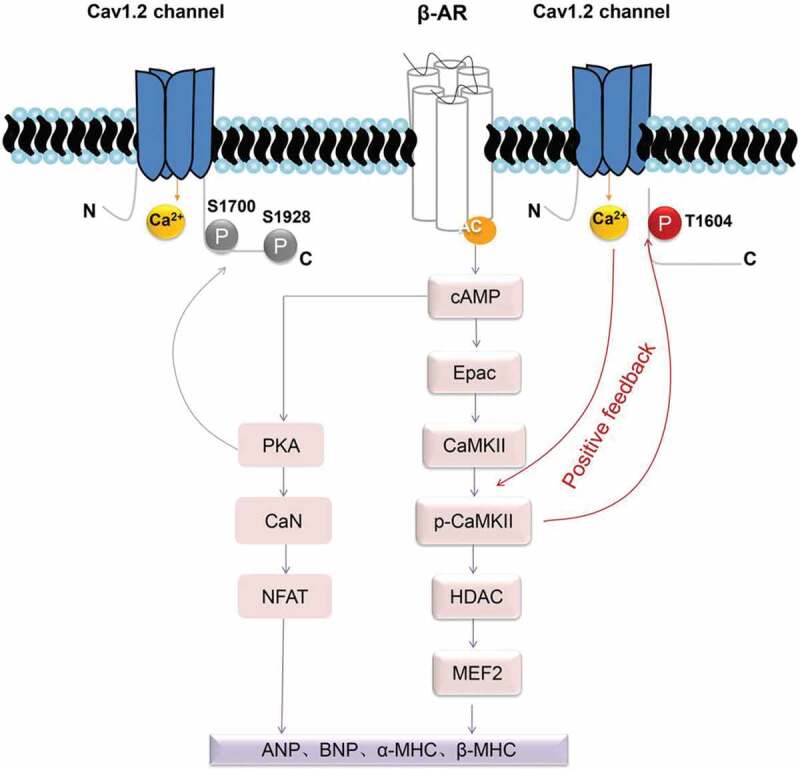Figure 6.

A schematic of the hypothesis that CaMKII-induced CaV1.2 channel phosphorylation at the Thr1604 site induces pathological myocardial hypertrophy development in rats. Briefly, a signaling cascade after ISO-dependent stimulation of cardiomyocyte β-ARs involves the activation of Gs proteins, which in turn stimulate cyclic adenosine monophosphate (cAMP). Exchange protein directly activated by cAMP (Epac) activates CaMKII-mediated phosphorylation of CaV1.2 at the C-terminal Thr1604 site, opening the CaV1.2 channel and increasing intracellular calcium levels. The latter further promotes CaMKII autophosphorylation. This positive feedback mechanism enhances the CaMKII/HDAC/ANP hypertrophic signaling pathway. Moreover, elevated intracellular calcium may also act on the β-AR/PKA hypertrophic signaling pathway, as reported by the group of William A. Catterall [29,30,33], eventually leading to irreversible cardiac hypertrophy and heart failure. β-AR: β-adrenergic receptor; cAMP: cyclic adenosine monophosphate; Epac: exchange protein directly activated by cAMP; CaMKII: Ca2+/calmodulin-dependent protein kinase II; HDAC: histone deacetylase; PKA: protein kinase A; CaN: calcineurin; NFAT: nuclear factor of activated T cells; ANP: atrial natriuretic peptide; BNP: B-type natriuretic peptide; and β-MHC: β-myosin heavy chain.
